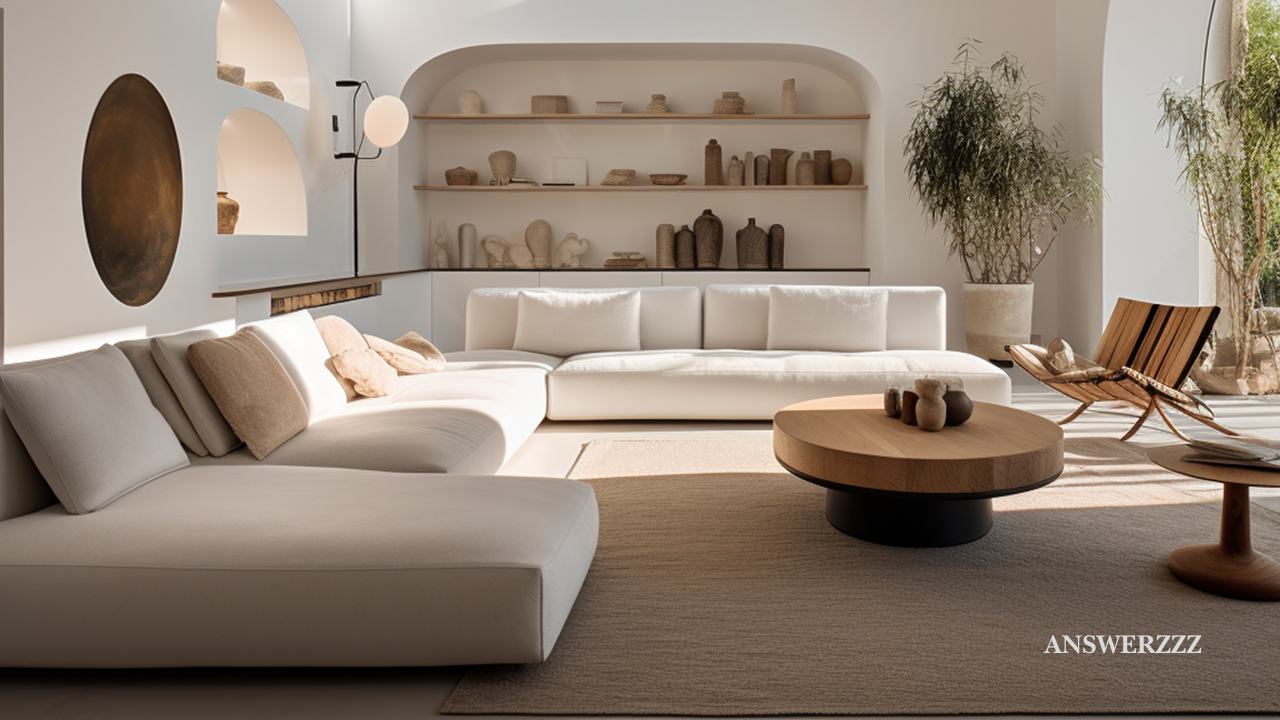Minimalism isn’t just a trend; it’s a lifestyle that has been adopted worldwide to help people find freedom, clarity, and happiness. As we enter 2025, the concept of minimalism has evolved, with an emphasis on intentional living, sustainable choices, and mental clarity. The world has become increasingly fast-paced, and many are turning to minimalism to bring simplicity and balance back into their lives. Whether you’re new to the idea or seeking to refine your approach, this guide will walk you through practical steps for mastering minimalism in 2025.
What is Minimalism?

Minimalism is the practice of focusing on the essentials, and stripping away excess possessions, activities, and commitments that don’t serve a purpose. It’s about finding value in experiences, relationships, and well-being rather than material possessions. A minimalist lifestyle aims to create a clean, organized environment while fostering a mindset centred on intentional living and mindfulness.
As minimalism progresses, it has branched out into various aspects of life, such as digital minimalism, sustainable minimalism, and mental decluttering. The modern minimalist approach incorporates eco-consciousness, ethical consumerism, and reducing digital clutter, all of which will be explored further in this guide.
Why Embrace Minimalism in 2025?
In 2025, the benefits of minimalism are more apparent than ever. Technology is advancing at an unprecedented rate, leading to increased digital clutter and screen time. Additionally, rising environmental concerns and the push toward sustainable practices have created a growing demand for responsible consumption and intentional living. Minimalism allows us to live in harmony with these societal changes by prioritizing quality over quantity, clarity over chaos, and intentional choices over impulsive decisions.
Getting Started with Minimalism: Key Areas to Focus On
Let’s explore the key areas where you can apply minimalism to your life, along with actionable tips to get started.
1. Decluttering Your Physical Space
A cluttered environment can lead to stress, anxiety, and a lack of productivity. Simplifying your physical space not only makes it easier to maintain but also contributes to a calm, organized mind.
Tips for Decluttering Your Home:
- Adopt the “One In, One Out” Rule: For every new item you bring into your home, commit to removing one. This prevents your belongings from accumulating over time and makes you more mindful of what you purchase.
- Use the Four-Box Method: Label four boxes as “Keep,” “Donate,” “Sell,” and “Discard.” As you go through each room, place items in the appropriate box. This helps streamline the decluttering process and ensures you only keep what is truly valuable to you.
- Invest in Multi-Functional Furniture: In small spaces, minimalist furniture that serves multiple purposes can help maintain a clean, open feel. For instance, storage ottomans or fold-out tables can save space and reduce clutter.
- Limit Decorative Items: Choose a few meaningful items or artwork that bring you joy and align with your style. Avoid overloading shelves or surfaces with decorative pieces; instead, let open spaces bring a sense of tranquillity.
Top Travel Tips for 2025: Maximize Your Adventures with Minimal Hassle
2. Digital Decluttering
In 2025, our digital presence can be just as cluttered as our physical space. Digital minimalism aims to reduce distractions, manage screen time, and create a focused digital environment.
Tips for Digital Decluttering:
- Organize Your Files and Photos: Take time to go through your files, documents, and photos. Delete duplicates, irrelevant files, and anything you no longer need. Organize the remaining files into folders to make future access easy.
- Limit App Usage: Analyze your app usage and uninstall any unnecessary apps. Limit social media apps or use tools that restrict your screen time to reduce distractions and enhance productivity.
- Unsubscribe from Email Lists: An overflowing inbox can feel overwhelming. Unsubscribe from newsletters, promotions, and notifications that no longer serve you. Consider using a service like Unroll. Me to manage subscriptions effectively.
- Turn Off Non-Essential Notifications: To stay focused, turn off notifications for non-essential apps. This reduces digital interruptions and helps you stay present in real-life interactions.
3. Mental and Emotional Minimalism
:max_bytes(150000):strip_icc()/5E8A8878FINALaltcrop-0d0cab159a7f46babecac0f1dd9525db.jpg)
Mental clutter often manifests in the form of stress, anxiety, and overwhelming thoughts. Practicing mental minimalism can help you prioritize your mental well-being and maintain clarity.
Tips for Mental Decluttering:
- Prioritize Mindfulness Practices: Regular mindfulness meditation, journaling, and deep breathing exercises can help clear mental clutter. Dedicate a few minutes each day to these practices to stay centred and reduce stress.
- Limit Social Commitments: Many people feel overwhelmed by social obligations. In 2025, embrace the power of saying “no” to activities that don’t align with your priorities or bring you joy. This creates more time for meaningful connections and self-care.
- Set Boundaries: Protect your mental space by setting clear boundaries, whether at work, with family, or with friends. This might mean setting aside time each day without distractions, communicating your needs, or delegating tasks.
- Practice Gratitude: A daily gratitude practice can help shift your focus from what you lack to what you have, reducing unnecessary mental comparisons and promoting contentment.
4. Minimalism in Consumption
Sustainable minimalism focuses on mindful consumption to benefit both personal well-being and the environment. By embracing quality over quantity, you can contribute to reducing waste and environmental impact.
Tips for Minimalist Consumption:
- Invest in Quality, Not Quantity: Choose high-quality items that will last rather than buying cheap products that need frequent replacement. This applies to everything from clothing and electronics to household goods.
- Embrace Second-Hand Shopping: Thrift stores, consignment shops, and online marketplaces are excellent sources for gently used items. Purchasing second-hand can save money, reduce waste, and support a circular economy.
- Avoid Impulse Purchases: Before making a purchase, give yourself a “cooling-off period.” Waiting a few days before buying helps you decide if you truly need the item or if it’s a fleeting desire.
- Support Ethical Brands: In 2025, more brands will be committed to sustainability, ethical labour practices, and eco-friendly materials. Supporting such brands can help you make a positive impact with each purchase.
5. Financial Minimalism
Minimalism in finances involves creating a budget that reflects your values, limiting unnecessary spending, and focusing on long-term financial goals.
Tips for Financial Decluttering:
- Create a Budget Based on Essentials: Determine your fixed and essential costs and prioritize them in your budget. Trim down discretionary spending on non-essentials to align with your financial goals.
- Automate Savings and Investments: Automate your savings to build a financial buffer. Setting up automatic investments can help you grow wealth without constantly monitoring your finances.
- Limit Subscriptions and Memberships: In today’s digital age, subscriptions can quickly pile up. Review your recurring payments for streaming services, apps, and memberships. Cancel those you rarely use or no longer need.
- Adopt a Minimalist Approach to Debt: Avoid unnecessary debt and focus on paying off any existing debt. By eliminating debt, you gain financial freedom and peace of mind, which are key to a minimalist lifestyle.
6. Sustainable Minimalism: Making Eco-Friendly Choices
In 2025, minimalism increasingly overlaps with environmental sustainability. Adopting minimalist principles helps reduce our ecological footprint, a crucial goal as climate concerns continue to grow.
Tips for Sustainable Minimalism:
- Reduce Plastic Use: Invest in reusable alternatives to disposable plastic items, such as water bottles, shopping bags, and food containers. This reduces waste and contributes to a healthier planet.
- Buy Local and Seasonal Products: Supporting local produce and goods reduces the carbon footprint associated with transportation and supports local businesses.
- Upcycle and Reuse: Before discarding items, consider if they can be upcycled or repurposed. DIY projects can give new life to furniture, jars, and other household items, saving money and reducing waste.
- Embrace a Capsule Wardrobe: A capsule wardrobe consists of a small, curated collection of timeless clothing pieces that can be mixed and matched. This reduces the need for constant shopping and minimizes wardrobe clutter.
7. Minimalism in Technology
In an increasingly tech-driven world, managing your technology use is vital to achieving minimalism. Technology minimalism is about using tech intentionally, minimizing distractions, and focusing on what truly adds value.
Tips for Minimalism in Technology:
- Use a Minimalist Phone Setup: Remove unnecessary apps and disable non-essential features to reduce distractions. A minimalist phone setup helps you stay focused and use your device more intentionally.
- Minimize Screen Time: Set limits on screen time for apps that are not essential, like social media. This frees up time for offline experiences and reduces digital fatigue.
- Choose Quality Content: Be selective about the content you consume online, from the news you follow to the shows you watch. Quality content enriches your mind, while junk content adds to mental clutter.
- Schedule Digital Detoxes: Take regular breaks from technology to recharge. Whether it’s a daily screen-free hour or a weekend digital detox, time away from devices fosters creativity, productivity, and relaxation.

Embracing the Minimalist Mindset
Minimalism isn’t just about decluttering; it’s about adopting a new mindset. Embrace the minimalist mindset by cultivating gratitude, practising mindfulness, and aligning your life with your values. In 2025, minimalism is a way to achieve balance in a chaotic world. It encourages us to focus on what truly matters and let go of distractions that don’t serve us.
As you embark on your minimalist journey, remember that it’s not about perfection—it’s about progress. Choose small steps that resonate with you, and gradually integrate minimalism into every aspect of your life.
Eco-Friendly Living: Sustainable Tips for 2025 You Can Start Today



